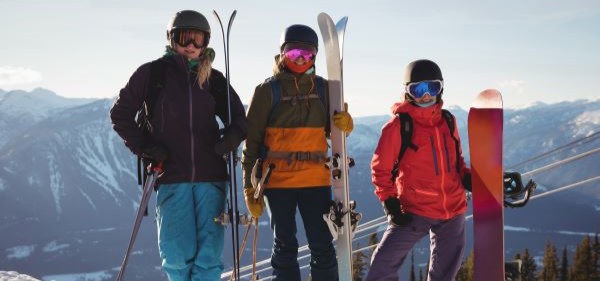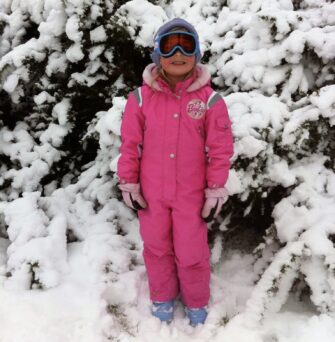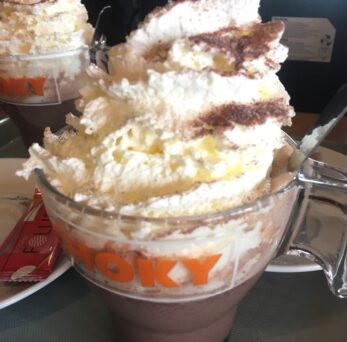You’ve most likely been provided with a packing list, but what are the must-have warm wear essentials for your child’s school ski trip?
Also: what does that ski kit jargon mean? Is it all really necessary? And are some items ‘more essential’ than others?
Forget about skis and ski boots – trip organisers will sort those out. Your job is to make sure your child is warm, dry and comfortable on the slopes. Follow our expert school ski trip packing list tips to find out what ski wear your child simply cannot do without – and save time and money.
Download your printable WhoSki.com school ski trip essentials checklist here
TWO top tips
School ski trip packing list tip No 1 :
Weather can change rapidly in the mountains. Conditions can change from clear blue skies and sunny slopes to falling snow and limited visibility within a matter of minutes. Ensuring your child is equipped for all eventualities is key for safety, fun and comfort: the makings of a successful ski trip.
School ski trip packing list tip No 2 :
Buy second hand where you can. Kids grow out of clothes quickly, so odds are you will be able to fit out your child with good-as-new, preloved ski wear at a fraction of the price for new kit. Register at WhoSki.com and you will receive regular email updates as new items are listed on site.
Must-have school ski trip clothes:
Ski jacket:
Your child’s essential ski outer layer, and usually the most costly item in your ski wardrobe. Choose a jacket that is large enough to fit multiple layers beneath ie a thin base layer, a thicker mid-layer and a microfleece to keep your child warm in the coldest conditions. They can add / remove these layers as necessary depending on weather, altitude and exertion levels.
The perfect ski jacket will be wind-resistant and waterproof, have multiple, zippable pockets, under-arm vents, a ski pass pocket on the sleeve and a powder skirt. A thinner jacket with layers beneath will make it easier to regulate temperatures. A hood is unnecessary as your child will be wearing a ski helmet while on the piste. Think safety: a bright-coloured ski jacket makes your child easier to spot on the slopes.
Preloved is the affordable option over new – and remember to sell it on after your child’s trip if that ski jacket won’t fit them again next year.
Ski pants / salopettes / trousers:
Whatever you call it, your child needs specialist ski legwear. A belt or braces will ensure ski pants don’t slip, vents will help regulate temperature, while reinforced knees and ankles will aid longevity and flexibility of movement. Comfort is key, so make sure ski trousers are roomy enough to fit thermal underwear beneath. Salopettes generally sit higher than ski pants and may include a bib front: handy to help keep out snow when your child takes a tumble on the piste.
Ski pants will flare towards the ankles to allow for ski boots. Many boast an inner ‘skirt’ around the ankle: this sits over the ski boot to help keep out snow. If you’re buying second hand, the ankle area may show some damage – this is perfectly normal as ski trousers often get caught on boot clips and ski bindings. Minor damage will not impair usage.
It’s all about layers
Base layers:
For a week-long school ski trip, you will ideally send your child away with a separate, long-sleeved, thermal base layer for every day of skiing. This item of ski wear will sit next to their skin, keep them warm and wick away sweat during a day of exertion on the slopes.
On warmer days, this may be the only layer required beneath your child’s outer ski jacket. In colder weather, they could wear up to two further layers. Namely…
Mid layers:
Two sets of mid layers will be ample for a one-week school ski trip. Simply put, a ski mid layer is the piece of clothing that goes between their thermal, sweat-wicking base layer and their waterproof ski jacket. It will keep your child warm, without weighing them down or preventing ease of movement.
A mid layer with a neck zip will help your child regulate their temperature by allowing in a bit of air as they heat up, or letting them zip up to their chin when they are standing around or on a chair lift.
Merino is the crème de la crème material for a mid layer but merino mid layers are expensive and need careful laundering. A synthetic, polyester mid-layer will be fine for school-age skiers. Keep man-made fibres out of landfill by purchasing second hand – and as ever, sell ski wear on afterwards.

Fleece:
A microfleece, thin puffer jacket or hoody plays a key role in your child’s ski wear layering system. They can slip it on as another heat-retaining layer beneath their ski jacket when temperatures are extremely low – and wear it around the hotel / hostel/ chalet when they get back from a day on the slopes. A padded gilet is another useful option to keep ski kids cosy.
Hands and feet…
Ski gloves:
Specialist ski gloves are essential. Longer, gauntlet style ski gloves that cover wrists are best as they keep out draughts. Integral elastic wrist leashes help prevent them from getting lost eg when you remove them to check your phone / piste map etc. A pair of thin glove liners is also recommended.
Mittens and fingered ski gloves are interchangeable, depending on personal preference. Mittens are generally warmer in lowest temperatures. Urge your child to put gloves to dry on a radiator at night so they will be cosy and comfy for the next day.
Ski socks:
Specialist ski socks are longer than normal socks with heat-retaining qualities and the right padding in the right places. Three pairs for a week-long school ski trip will be enough: one pair on, one pair in the drawer and a pair airing on the radiator. Or, more likely, screwed up on the floor. Oh well.
Snowboots:
A chunky pair of cosy, waterproof snowboots is an absolute must-have for your child’s school ski trip. They make for warm feet whether they are playing in the snow or tramping around resort, and help prevent tumbles on icy surfaces. Get your child to wear snowboots for the journey to cut down on luggage weight. Trainers really don’t work in ski resorts as outdoors wear.
Buff:
A buff is a thin, tubular neck scarf with multiple uses that will protect your child’s chin, neck, face, head and ears from the cold, including wind, snow and sleet. Much safer than a scarf (can’t get caught on anything or fly off) a buff is also easier to tuck into a pocket when not in use.
Must-have school ski trip accessories:
Goggles:
A pair of goggles is more protective than sunglasses, less easy to lose, warmer for the face on a cold day or when it is snowing. An adjustable strap means goggles can live on your child’s helmet even when not in use. Sunglasses are an optional extra.

Slippers/Crocs/Birkenstocks:
Outdoor footwear is banned in a lot of ski accommodation, so your child must take slip-ons to wear between boot room and chalet/hotel room. It’s good to give feet a break from restrictive ski boots, and without a robust pair of slippers that has a strong sole, your child’s socks will quickly get and stay soggy. Yuck.
Lip balm and high SPF sunscreen:
The sun can be incredibly strong on the slopes. A pocket-friendly tube of high-factor 30-50 SPF sun cream means your child will be able to top up on protection when they get back on the slopes after lunch. Make sure your child packs a couple of lip balms too, as they are easily lost.
A small daypack:
A light backpack where your child can stash a spare mid layer or fleece for days when the weather is variable, along with a water bottle, mobile phone and any other essentials, will be useful. Even if they don’t use it when skiing, it will be handy for après ski outings and activities.
Hat:
Not necessary for skiing, as your child will be wearing a helmet (provided as part of the ski hire package) while on the slopes, but a hat is essential for off-piste, in-resort activities. A woollen beanie or similar will do the trick.
Looking for kit for your child’s school ski trip? Visit the WhoSki.com shop for good condition, affordable, second hand ski wear.
Find out more:
What clothing is essential for a school ski trip
What to pack for a family ski trip
Header image: wavebreakmedia_micro on Freepik

















